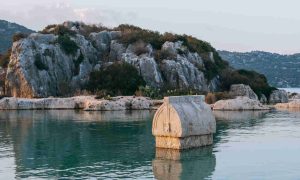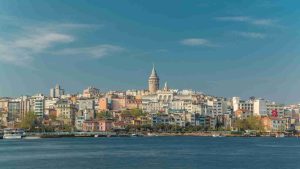History and archeology lovers have a lot to see in Miletus. In this blog we have already talked about other important sites and deposits, some of them from the Greco-Roman era such as Halicarnassus, and others from previous periods, such as Göbekli Tepe. But we dedicate the space it deserves to Miletus, which does not receive as much tourism as other sites but can be an interesting surprise for those who wish to understand the importance of Anatolia in what was Ancient Greece.
Where is Miletus
Miletus is in what the ancient Greeks called Caria, a historical region of southwestern Anatolia that also included Halicarnassus. Currently, this site is located in the province of Aydin, near the mouth of the Menderes River. It is located just 75 km south of Ephesus and about 100 km north of Bodrum. In its origins it was a coastal city, but the deposition of sediments caused the sea line to move away, and now it is about 6.5 km away in a straight line.
What Was Miletus
Miletus was one of the most important cities of Ancient Greece. Its first great era occurred with the arrival of thousands of people from Crete, around 1,000 BC. Another golden age took place in the 7th century BC, when it became the cradle of philosophy thanks to intellectuals who gave name to the School of Miletus: Anaximander, Anaximenes and, above all, his teacher, Thales of Miletus.
At an economic and geopolitical level, its period of growth arose in the Hellenistic era, after Alexander the Great secured control of this territory. And
In Byzantine times it remained relevant, as demonstrated by the fact that architect Isidore of Miletus, one of the architects of the Hagia Sophia basilica in what was then Constantinople, was born here. But the progressive distancing of the coastline negatively impacted the city, which became a grazing area in Seljuk and Ottoman times, causing a deforestation that is still evident today.
What to See in Miletus
In the archaeological site of Miletus there are many things to see. Perhaps a good starting point could be the
Already in the archaeological site, the great icon is the Roman theater, which came to have capacity for 15,000 spectators. Its southern and northern agoras are still recognizable, although its main elements are today in the Pergamon Museum in Berlin. And the stadium and the Faustina thermal baths tell us about daily life in that Greco-Roman city.
For its part, the castle in ruins is the main contribution of the Byzantine era, while the Ilyas Bey mosque, perfectly preserved, is the great monument of the Ottoman era.
How to Travel and Visit Miletus
Due to its proximity to Kusadasi and Bodrum, and for having a limited tourist infrastructure, the most appropriate option to visit Miletus is through a half-day or full-day excursion from either of the two cities mentioned. For this, it is necessary to have



